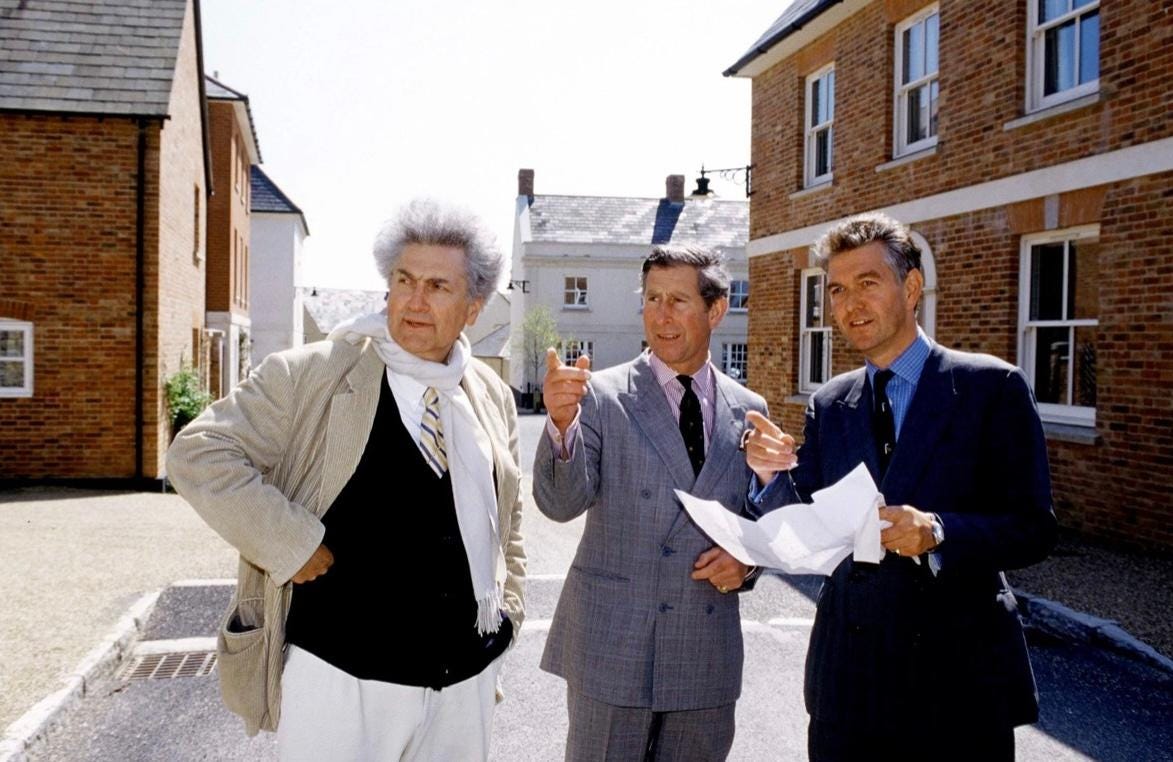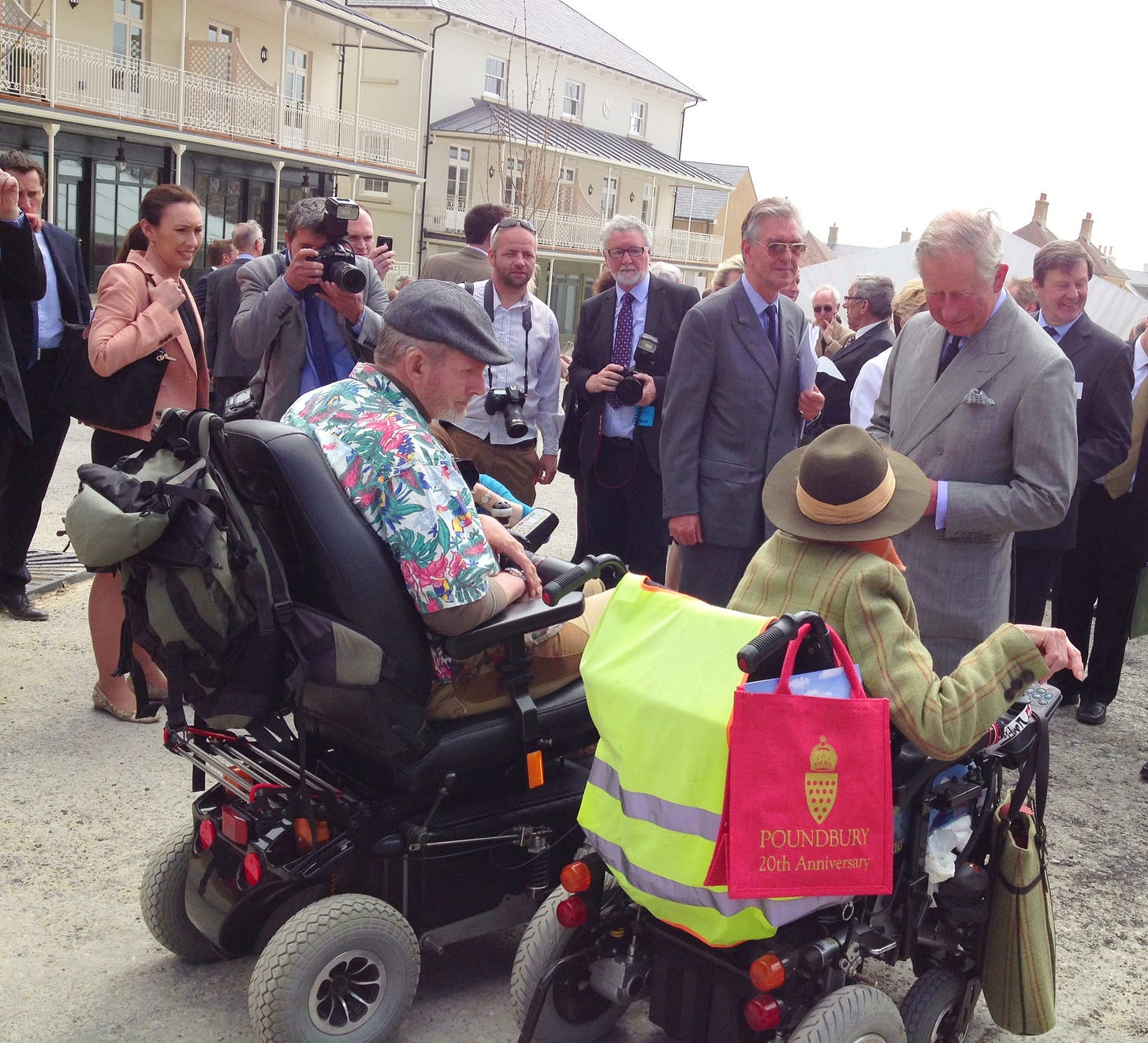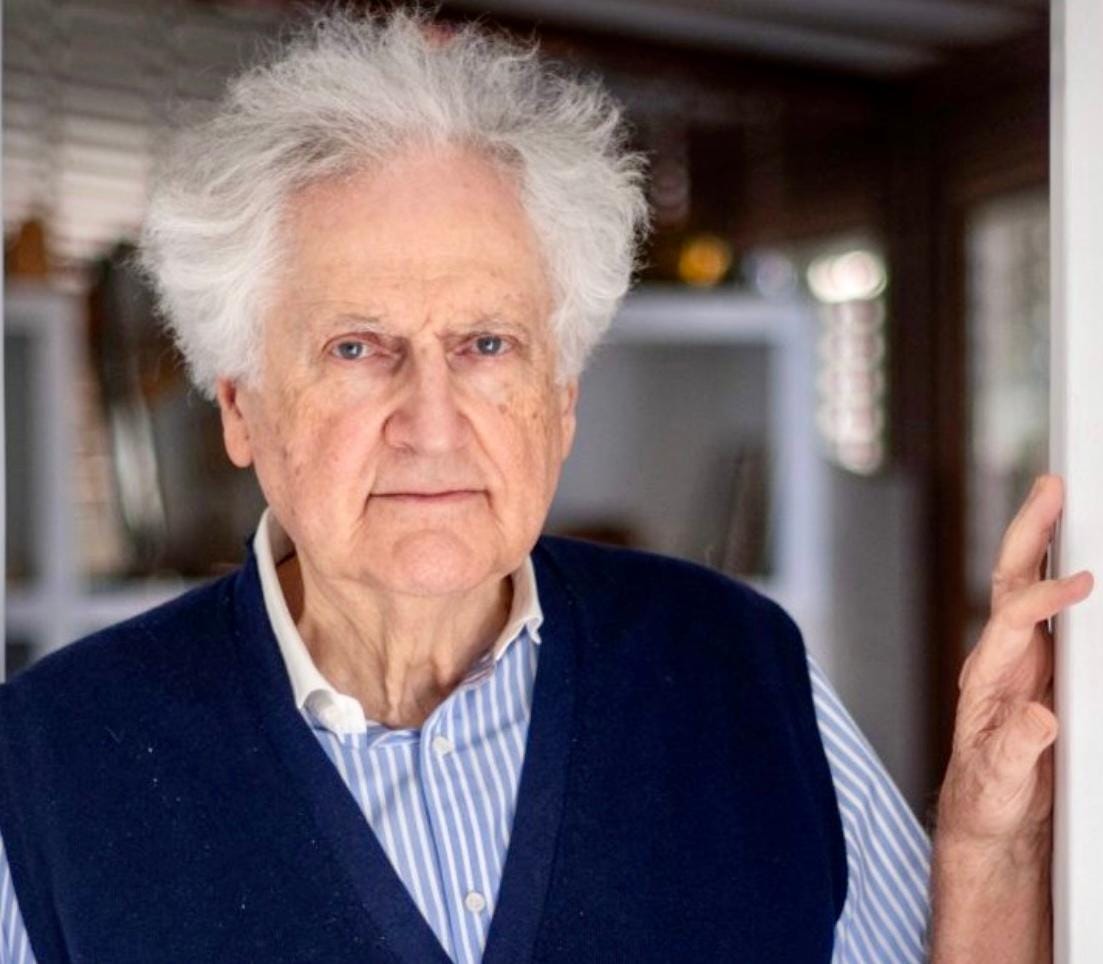The visionary architect behind King Charles's successful model town
An exclusive interview with Leon Krier, the pioneering planner who helped Charles III create Poundbury more than three decades ago
King Charles III and his close collaborator, the New Urbanist architect Leon Krier, have endured withering criticism over the years for the traditional yet innovative town they created next to Dorchester, a historic market town of 20,000 three hours southwest of London. Modern architects and their allies in the left-leaning press hated the place from the start. As early as 1999, when only several hundred buildings had been completed, The New Statesman derided Poundbury as a failed “embarrassing anachronism.” Eight years later, The Guardian ridiculed it as “fake, heartless, authoritarian and grimly cute,” a “counterfeit design and cack-handed pastiche.”

Yet today, as Poundbury nears its completion date of 2028, The Sunday Times has proclaimed it one of the best places to live in Britain. It is situated on 250 acres and rimmed with 150 acres of parkland, playing fields and gardens. Building styles include Georgian and Arts and Crafts, with echoes of Charleston, South Carolina and New Orleans. There are now more than 2,230 homes, 4,600 residents, and 240 businesses (including a chocolate factory, shops of all sorts, cafes and restaurants, pubs, and offices) that employ nearly 2,500 people.
“Restore a sense of harmony”
When all the building has finished, Poundbury is expected to have a population of around 6,000. Its basic principles are high density rather than suburban sprawl, mingling low-rise residential and commercial buildings within walking distance, a primacy of pedestrians over cars, and an emphasis on high quality and elegant design. As Charles put it in a 2005 speech, Poundbury is grounded in “traditional urbanism, local vernacular architecture and natural materials to restore a sense of harmony, proportion and above all something called ‘beauty’ to day-to-day life.” Even the Waitrose supermarket has a graceful arched façade.
Poundbury includes striking environmental and social innovations. An “Anaerobic Digestion Plant” uses local food and farm waste such as maize to produce biogas that powers the town and contributes to the national grid. As a result, neither wind nor solar power is necessary. Charles has always insisted that low-income subsidized housing be fully integrated into the community, indistinguishable from privately owned homes rather than being sequestered in “council estates.” These dwellings have been built by alliances of private developers and local authorities and managed by charitable trusts such as The Guinness Partnership. Charles’s target of thirty-five percent “social housing” within new developments became British government policy.
A major tourist attraction
From the beginning, Poundbury has been profitable, and home prices have steadily risen. Today houses run anywhere from $400,000 to $800,000, and luxury apartments range from $1 million to $2.5 million. The town has become a major tourist attraction, and home developers elsewhere have emulated its precepts, among them Nansledan in Cornwall and Tornagrain in Scotland. Charles has rewarded Krier with a bust in the garden on his Highgrove estate and made him a Commander of the Royal Victorian Order.
Architects, town planners, environmentalists, and government officials from around the world make regular pilgrimages. A decade ago, I visited twice, the second time with a small group invited by the Prince Charles for a tour and briefings from representatives of the Duchy of Cornwall, which owns the land under Poundbury and has controlled its development. The Duchy is a private estate with extensive holdings throughout Britain that was set up by King Edward III in 1337 to provide income for all male heirs to the throne. For seventy years, Charles was that beneficiary, and since the death of Queen Elizabeth II, William has been, like his father, the Duke of Cornwall as well as the Prince of Wales.
It was hard to resist the enthusiasm of Charles on my second visit in May 2013 to mark the community’s 20th anniversary. As our group wandered through the town, he quizzed his guests (among them Nick Boles, the Coalition government’s Minister for Planning), chatted up residents and construction workers, walked into shops, asked that an obtrusive satellite dish be “repositioned,” and proudly pointed to a limestone gargoyle hiding a steam pipe that he had suggested on a previous visit.
“I want to look out and see Poundbury and be proud”
He told me that from the vantage point of the Maiden Castle on a distant hill, “I want to look out and see Poundbury and be proud.” But the remark that intrigued me even more was his response when I asked, “Sir, do you remember when you first met Leon Krier?” He replied, “It was a long time ago. We met when I was told he was the man to do the master plan.”
I made a note to someday talk to the visionary described by the preeminent architect Robert A.M. Stern as “one of the most influential architects and urbanists of our time” who had “built comparatively little” but through his provocative writing and his imaginative drawings was “an unabashed proponent of the humanist culture of Western classicism” and “a realist seeking to reintegrate tradition into modern practice.”
Eleven years later, we spoke for more than two hours by Skype, connecting from Washington, D.C. to a book-lined study in his native Luxembourg. At age seventy-eight—two years older than King Charles—he still cut a striking figure with his shock of unruly white hair. He was voluble and erudite, citing Le Corbusier and Spinoza, but with an easy chuckle. He gave me a fresh perspective on the model town’s rocky start and how Charles became a passionate New Urbanist. Krier also shared the previously unseen drawings that attracted the prince’s interest in his work and renderings of the Poundbury tower that Duchy officials prevented from being built.
Keep reading with a 7-day free trial
Subscribe to ROYALS EXTRA BY SALLY BEDELL SMITH to keep reading this post and get 7 days of free access to the full post archives.





